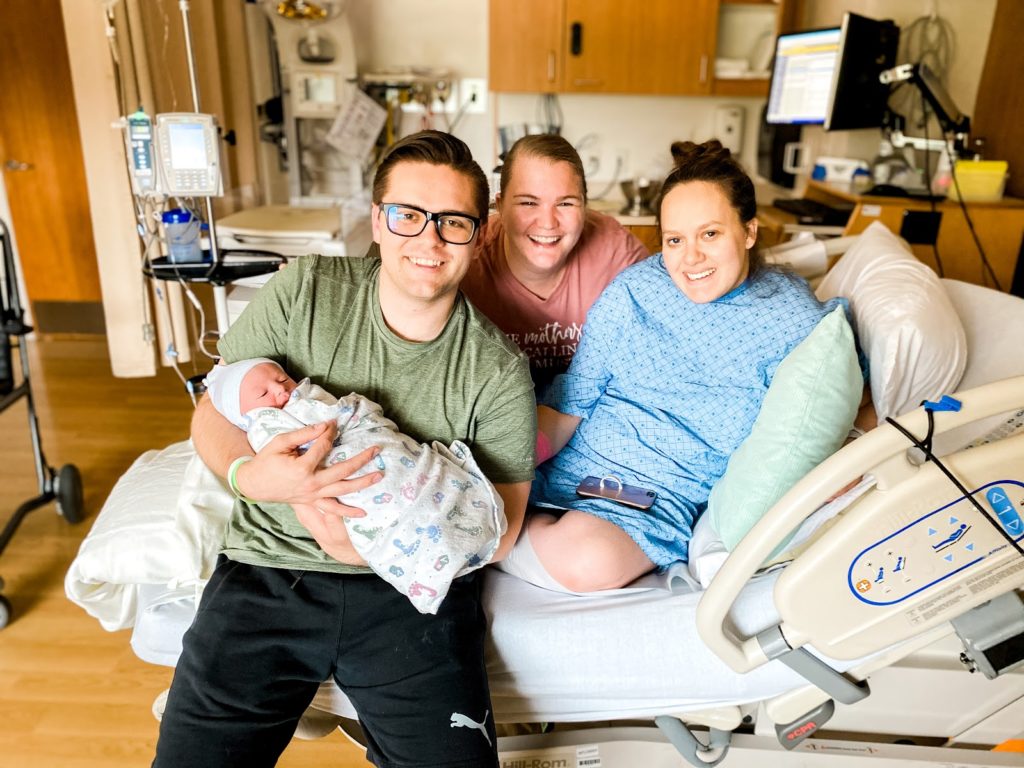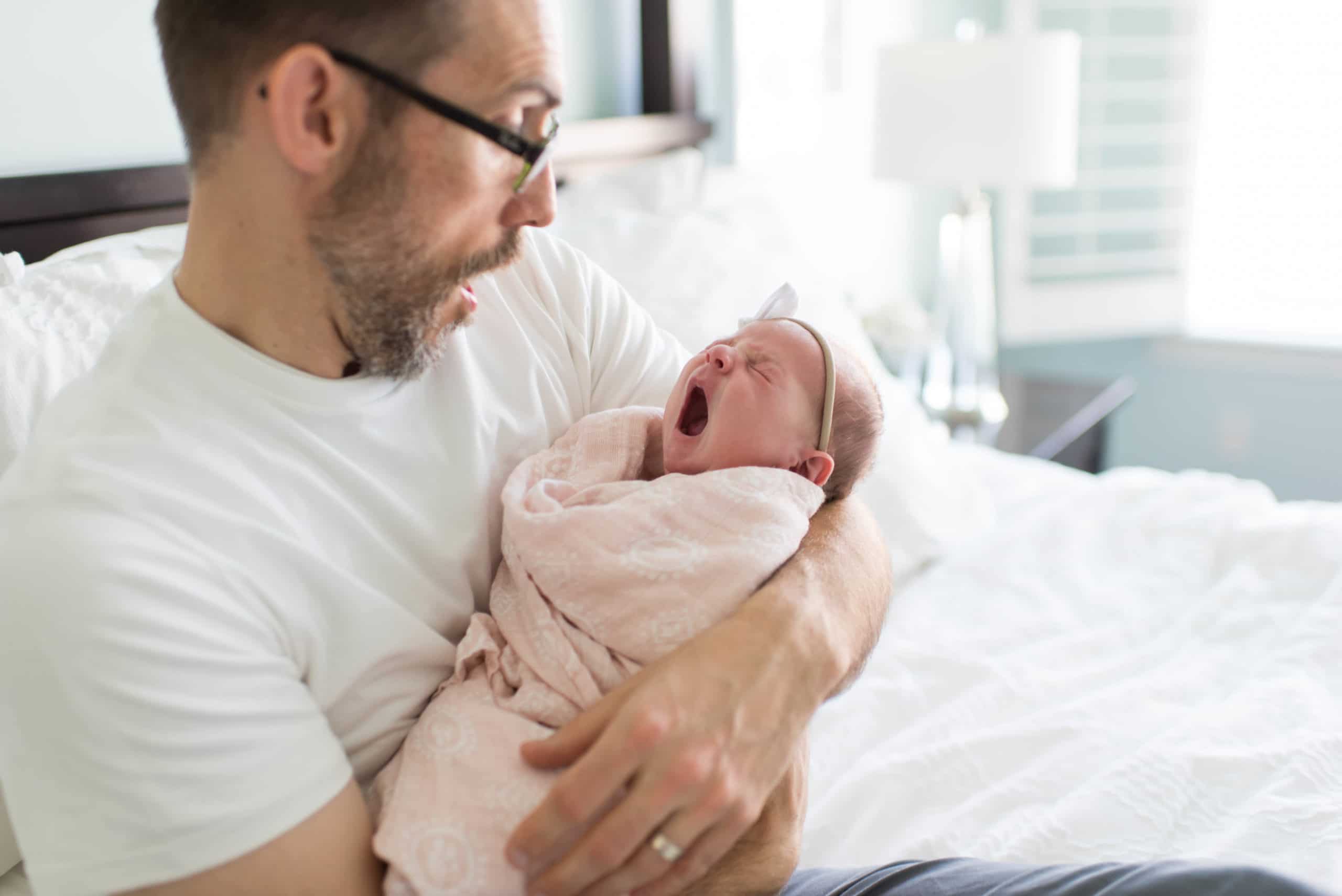If you are pregnant after having a Cesarean, you are probably wondering about your options, and weighing the relative benefits of a VBAC vs repeat c-section. You might be wondering if vaginal birth after Cesarean (VBAC) is possible. If you are told you have a low VBAC success rate, it might leave you feeling down and discouraged.
So, what is the success rate of VBAC?
The good news is that most women who attempt a VBAC will achieve it!
As a data junkie, I love to see the numbers and analyze the risk vs. reward. I dug into the data when researching to prepare for my VBAC and continue to dig into research and evidence to provide the best and most up to date information for YOU.
In this article, we’ll cover the success rates for VBAC and VBA2C, the risks associated with VBAC, and provide the data for the most up-to-date VBAC Facts.
What is the success rate of VBAC?

The American Pregnancy Association estimates that 60%-80% of people who attempt a vaginal birth after Cesarean will be successful.
Many things influence how your delivery will go — I have seen practices and providers with VBAC success rates over 90%. Finding a provider who is comfortable with VBAC and a supportive location makes a significant impact.
Many things can impact your labor and birth, such as:
- Finding the right provider
- Whether your VBAC needs to be induced
- The benefits of doula support
- Healing from previous birth trauma
The infamous VBAC calculator has been used by providers to try and predict the chances of having a successful VBAC. It is important to note that ACOG does not support the use of the VBAC Calculator, and there is no single factor that will determine your birth outcome.
The calculator uses ethnicity, weight, the reason for your prior Cesarean, or whether you have had a previous vaginal delivery to weigh your odds.
If your provider often refers to your chances or relies heavily on the VBAC calculator, they may not be supportive of your birth choices. ALWAYS discuss your unique circumstances with a trusted provider.
My very first birth as a doula was with a VBAC mom who had a 4% chance of success, according to the calculator. Her provider was supportive, and she had a beautiful, uncomplicated delivery and pushed her baby out in just twenty minutes.
When deciding whether to try for a VBAC, the success rate is only a partial picture. It’s just as important to learn all the ways you can improve your chances of a successful VBAC.
VBA2C success rate
VBA2C has a 60% – 80% success rate, similar to VBAC. Uterine rupture rates for VBA2C are 1.4%, although there is limited data. VBAC rates range from 0.2% to 1.5%. [ACOG]
VBA2C (VBAC after 2 Cesareans) can be a controversial topic among providers, many refusing to support them at all. When you have had two Cesareans, the chances of success are similar to VBAC after just one Cesarean (60% to 80%).
The odds of uterine rupture are similar, and even ACOG recently updated their stance to support a trial of labor (TOL or TOLAC) after 2 Cesareans. They state:
It is “…reasonable to consider women with two previous low transverse cesarean deliveries to be candidates for TOLAC and to counsel them based on the combination of other factors that affect their probability of achieving a successful VBAC.”
ACOG’s Obstetrics & Gynecology, Practice Bulletin No. 184: Vaginal Birth After Cesarean Delivery
Although hard data is lacking, the average VBA2C uterine rupture rate found in the ACOG bulletin referenced above is 1.4%. It would likely be reduced by inducing less, inducing only when the cervix is ripe when induction is essential, and using drugs and interventions a lot less (and much more judiciously).
Risks of VBAC

The most significant concern for women who have had a previous cesarean is the risk of uterine rupture. Uterine rupture happens when the uterus tears, typically at the site of the previous Cesarean scar. It is rare and can occur during late pregnancy or active labor.
ACOG states that if you had a prior Cesarean with a low transverse incision, the risk of uterine rupture ranges from .2 to 1.5%, approximately one chance in 500. They also state:
VBAC is safer than a repeat cesarean, and VBAC with more than one previous Cesarean does not pose an increased risk.
ACOG’s Obstetrics & Gynecology, Practice Bulletin No. 184: Vaginal Birth After Cesarean Delivery
Remember, more than 99% of the time, an unsuccessful trial of labor after Cesarean (TOLAC) is not due to uterine rupture. Some reasons a repeat Cesarean may be necessary include:
- Placenta previa or accrete
- Distress on the mother or baby
- Uncontrolled medical conditions like gestational diabetes, preeclampsia, or any others that make laboring unsafe
- Labor that doesn’t progress after 6 hours with no cervical change
- Cord prolapse
- Transverse baby
- Some congenital disabilities
- Maternal fatigue or exhaustion
- History of uterine rupture
- Or, simply, that’s what the birthing person chooses.
Here are some questions to ask about interventions in your pregnancy or during labor, in the event that a Cesarean may be necessary at any point:
- Why is a C-section being recommended?
- Is there a health problem with me or my baby that makes birth emergent and vaginal birth dangerous? What are those problems? Is there any other way to manage them?
- What problems can result from a C-section for my baby and me?
- What will recovery be like?
- Will I be able to have a vaginal birth with my next pregnancy?
A family-centered Cesarean can be a healing and empowering experience, whether you choose to attempt a vaginal birth or not.
VBAC success rates: Where to find more info
Attempting a VBAC is an individual decision based on your unique needs, made with your health provider’s support. Take a look at your goals, birth plans, and what type of outcome you want and accept if things don’t go the way you plan. Weigh all the benefits and risks specific to your circumstances.
Pay attention to the advice of your caregivers, but remember that every provider differs, sometimes drastically, in their knowledge, and how they support VBAC. They also may not be up to date with current guidelines and recommendations for TOLAC, VBAC with twins, or other circumstances.
Moving forward, dig into the current recommendations and research. Get educated. Make sure you talk to a few different providers and get a feel for their support until you find one whose philosophy aligns with yours. Know the risks and benefits of your decision, and be sure to check your intuition to decide what is best for your birth.
Plus Size Pregnancy’s article on VBA2C is a must-read. It applies to women of all shapes and sizes. In that article, you will find resources and information on how to interpret dozens of studies related to the VBAC. They even go into what it looks like to have a VBAC after three or more Cesareans (VBA3C or VBAMC).
Listen to our podcast, and be sure to listen to episode 2 all about Meagan’s VBA2C journey and use the search bar to find more VBA2C stories.
Want to learn everything you possibly can before your VBAC? Register today for our Ultimate VBAC Course for Parents, where we dig into the stats, facts, and details and provide you with all the preparation you need to make your VBAC plans.
What factors do you believe influenced your birth outcome? Let us know in the comments below!














 Benefits of a Doula for Pregnancy, Birth, & Beyond
Benefits of a Doula for Pregnancy, Birth, & Beyond
I’m an anesthesia provider. I recently was called to an “emergency csection” that I was given the impression was for fetal distress. I was rushed and pressured by the OB to get this lady ready ASAP. As I did a spinal, he was impatient and making comments about the baby and if I didn’t hurry we’d need general anesthesia. Keep in mind, it probably took me a total of 2 minutes to get this spinal. The woman had 5 previous deliveries, with 1 csection. Her last 3 births were vaginal- including one set of TWINS! Her spinal didnt set for some reason (I think it had to do with a substance use). I wanted to use a sedative to allow them to complete the section without GA. He didn’t want to wait the 2 minutes and insisted on GA. I- still being given the impression that we had fetal distress- rushed to put this woman down and intubate her- I NEVER want to GA a pregnant woman EVER! It’s rarely worth the risk. Of course she was complaining of heart burn before I put her to sleep and once I opened her up- despite cricoid pressure to try to keep her epiglottis closed- she had stomach contents coming up. I suctioned as fast as I could and put a tube in and worried she could have had some aspiration (this is WHY anesthesia always insists on an empty stomach!). Once I had her asleep and tubed- despite massive risks, he states that the “emergency” was simply that she was in labor with a previous section and that he doesn’t “do VBACs” OMG, can I say how utterly unacceptable this is? I had done a spinal and had her under GA in probably less than 6-8 minutes. There is no way that the risk of uterine rupture would have ever passed the risk of issue from GA. It’s unacceptable that at the LEAST, there would have been a PAUSE to let us obtain the drugs needed to avoid this unnecessary risk. The fact that a vaginal birth was DENIED to this woman who had successfully delivered FIVE children prior makes me sick. We have such a way to go! And FYI: every woman who gets a section *thinks they “needed” it. I’ve only done a handful in my entire career that it was the case. Such a scam. We can do so much better!